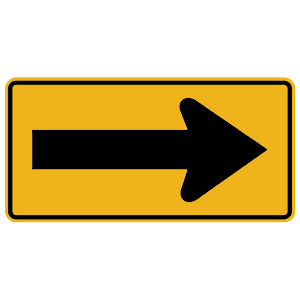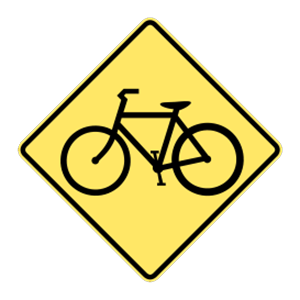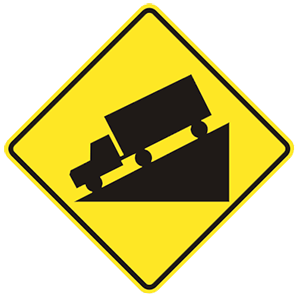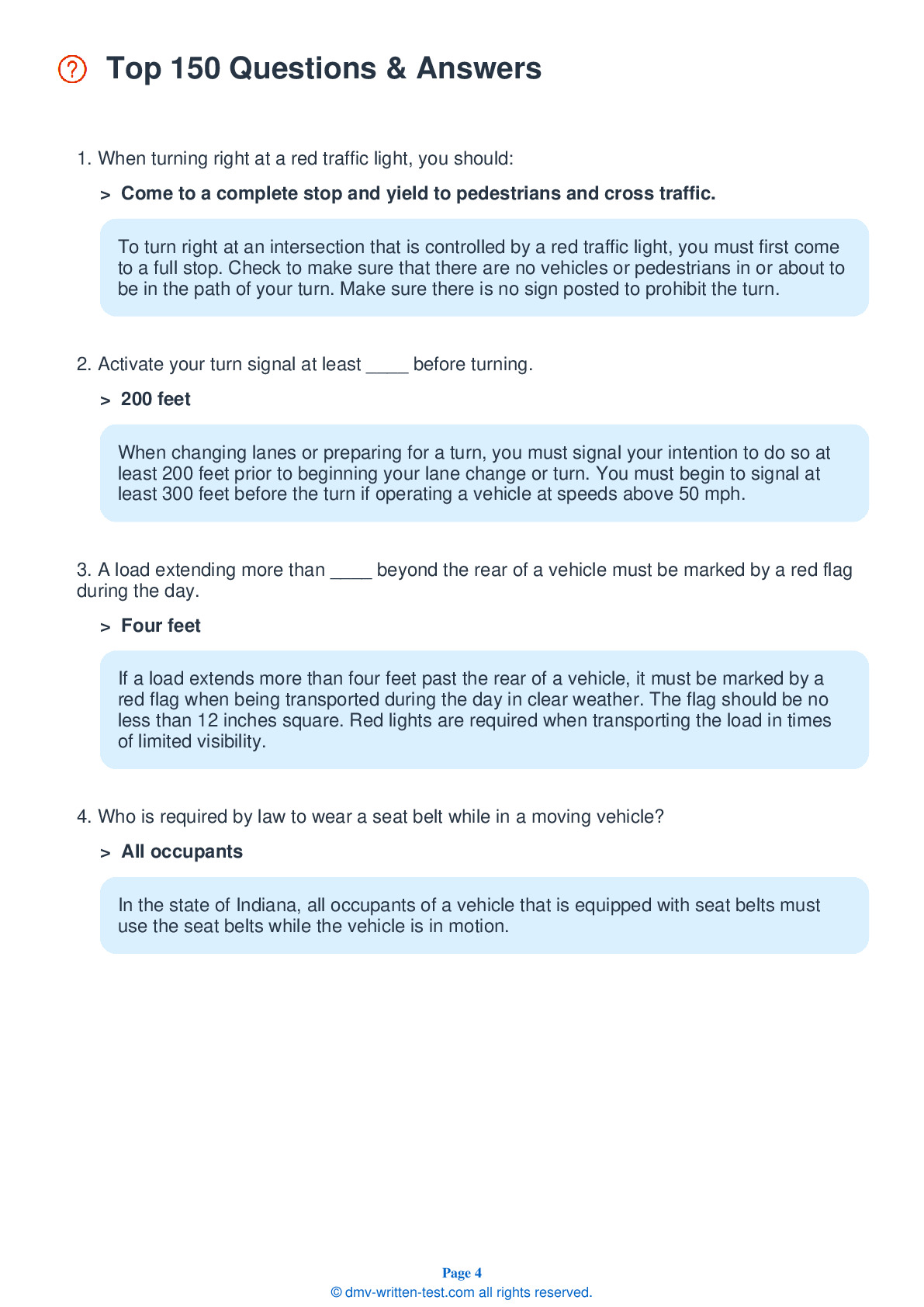2025 Indiana Permit Test 21
The following questions are from real DMV written tests. These are some of the actual permit questions you will face in Indiana. Each permit practice test question has three answer choices. Select one answer for each question and select "grade this section." You can find this button at the bottom of the drivers license quiz. For a complete list of questions and answers for Indiana please visit https://cheat-sheets.dmv-written-test.com/en/indiana/car.
Number of Tests
Number of Question
Passing Score
39. Traffic signals sometimes display arrows to control turns from specific lanes. A solid yellow arrow:
Explanation
A solid yellow arrow has the same meaning as a yellow traffic light. When approaching a solid yellow arrow, you must reduce your speed and prepare for a red light.
40. Your vehicle strikes an unattended parked vehicle and you cannot locate the vehicle’s owner. You:
Explanation
Upon striking an unattended vehicle, stop and try to locate the owner. If you cannot find the owner, leave a written notice containing your name, your address, and the circumstances of the accident.
42. Regulatory signs:
Explanation
Regulatory signs are often rectangular and white with black markings and are used to indicate what things a driver must or must not do in a designated area. They may display speed limits, prohibit passing or turning, or clarify any other driving regulation.
43. A load extending more than ____ beyond the rear of a vehicle must be marked by a red flag during the day.
Explanation
If a load extends more than four feet past the rear of a vehicle, it must be marked by a red flag when being transported during the day in clear weather. The flag should be no less than 12 inches square. Red lights are required when transporting the load in times of limited visibility.
44. When exiting a highway, you should slow down:
Explanation
When exiting a highway, you should get into the exit lane well in advance. Do not begin to slow down until after you have moved into the exit lane.
45. When approaching an accident scene, you should:
Explanation
Do not stop at an accident scene unless you are involved or emergency help has not yet arrived. Keep your attention on your driving and keep moving, watching for people who might be on or near the road. Never drive to the scene of an accident, fire, or other disaster just to look.
46. Which of the following does not happen after drinking?
Explanation
Alcohol reduces your reaction time, reduces your ability to see clearly, changes your judgment of speed and distances, reduces your ability to recover from the glare of headlights, and often reduces your inhibitions and makes you more likely to take risks.
47. To safely pass a bicycle, you should:
Explanation
When passing a bicyclist, slow down and give them as much space as you can. Bicyclists have much less protection than drivers of motor vehicles and they should not be crowded. Passing a bicycle too quickly can shift the bicyclist off-course.
49. You may avoid the risks of alcohol-related crashes by:
Explanation
The only way to avoid the risks of drinking and driving is to decide before you start drinking that you are not going to drive. Because alcohol affects your judgement, it will be harder for you to make safe decisions after you have started drinking.
50. When you see this black and yellow sign, it means:

Explanation






